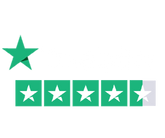Everything you need to know about unheated sapphires : our guide

In the fascinating world of gemstones, unheated sapphires embody absolute authenticity. A natural phenomenon that affects only 5% of sapphires available on the global market. These natural, untreated stones are the Holy Grail for discerning collectors and lovers of exceptional jewelry. Their rarity explains why they can be worth two to three times more than a heated sapphire of equivalent quality. Between authenticity, investment, and natural beauty, discovering the world of untreated sapphires means entering the very exclusive circle of fine jewelry.
What exactly is an unheated sapphire ?

An unheated sapphire is first and foremost the story of a corundum that has traveled from the depths of the earth without ever crossing the path of a gem cutter's furnace. This natural gemstone retains its original characteristics: its color, inclusions, and imperfections that tell the story of its thousand-year geological journey.
The fundamental difference with heated sapphires
Let's not confuse the terms: an “untreated” sapphire is not necessarily “unheated.” The former has not undergone any chemical modification (irradiation, diffusion, filling), while the latter has escaped traditional heat treatment. A heated sapphire is one that has undergone heat treatment at temperatures between 800 and 1300 degrees, a practice that has been accepted in jewelry for centuries.
This heating process dissipates inclusions and intensifies the color. The result? A stone that is visually purer, but has lost its original character. Unheated sapphires, on the other hand, retain their characteristic natural inclusions: the famous butterfly wings, the fine rutile needles called “silk,” and the color zoning that gives them their unique charm.
Gemmological identification methods
Can you recognize an unheated sapphire with the naked eye? Mission impossible. Only a trained gemologist can detect the telltale signs: intact silk (rutile needles that melt during heating), the absence of healed cracks typical of heat treatment, and preserved crystalline inclusions.
Laboratories use sophisticated techniques: spectroscopy, microscopic analysis, fluorescence studies. These tests make it possible to identify with certainty whether the stone has undergone heat treatment or whether it remains in its natural state.
Why choose an unheated sapphire: rarity and valu

The appeal of unheated sapphires goes beyond mere aesthetics. It is a philosophical choice, a commitment to pure authenticity.
On the market, nearly 95% of sapphires are “heated.” This staggering statistic explains the current craze for stones that have not been heat-treated. Owning an unheated sapphire means possessing a fragment of nature in its purest state, an exception in a sea of modified stones.
This rarity directly influences prices. High-quality stones (very pure and intensely blue) generally cost twice as much as their heated counterparts. For exceptional qualities and heavy weights, the difference can even triple, or more.
Heritage investment
Beyond the emotional aspect, unheated sapphires are a tangible investment. Their value is steadily increasing, driven by growing demand and limited supply. Collectors around the world seek out these natural stones, particularly those from prestigious deposits such as Kashmir and Burma.
Experts agree: in an uncertain economic climate, untreated gemstones represent a safe haven, just like gold. Their uniqueness and traceability make them prime assets for building wealth.
Prices of unheated sapphires according to essential criteria

The price of an unheated sapphire is not simply a matter of its lack of treatment. Several factors come into play, creating a complex but fascinating scale of value.
The decisive influence of color
There is a classification system for the prices of unheated sapphires, with the most expensive being blue and orange sapphires known as “Padparadsha,” followed by pink, yellow, and purple sapphires. Deep, luminous blue, without being too dark, remains the Holy Grail. Collectors are particularly interested in “royal blue,” an exceptionally rare shade.
To give you a concrete idea: A 1-carat pink sapphire can cost between €1,500 and €3,000 or more if it has a beautiful, intense, and uniform color (and has not been heated). Prices rise exponentially with the rarity of the color and the intensity of the hue.
Carat weight and price progression
The rule is simple: the heavier the stone, the higher the price per carat. A 3-carat unheated sapphire does not cost three times the price of a 1-carat stone, but much more. This exponential increase is due to the growing rarity of large, beautiful stones.
On average, the price of normal sapphires varies between €300 and €3,000 per carat. However, for sapphires from the Kashmir region, which are renowned for their excellent gemological quality, the price can rise to as much as €50,000 per carat.
Geographical origin: a determining factor
The origin of a sapphire greatly influences its value. Stones from Kashmir dominate the luxury market, closely followed by those from Burma (Myanmar) and Sri Lanka (Ceylon). Madagascar, a more recent producer, also offers exceptional stones at more affordable prices.
Geographical origins of the most prized unheated sapphires

Each producing region gives sapphires unique characteristics, creating a fascinating geography of color and quality.
Cashmere: the velvety blue myth
Kashmir sapphires embody absolute excellence. Their velvety, almost milky blue color is the result of microscopic inclusions that diffuse light in a unique way. These stones, mined mainly between 1881 and 1887, are now impossible to find in mines. Their historical rarity makes them the most expensive sapphires in the world.
Sri Lanka: The Island of Treasures
The former Ceylon has been producing sapphires for over 2,000 years. Sri Lankan stones are distinguished by their exceptional clarity and delicate pastel hues. From light blue to soft pink, including the extremely rare padparadscha (pink-orange), Sri Lanka offers an incomparable palette.
Myanmar: pure intensity
Burma, now known as Myanmar, produces deep, saturated blue sapphires. Less velvety than those from Kashmir but remarkably intense, they captivate with their vivid brilliance. The deposits in Mogok, nicknamed “the valley of rubies,” also produce exceptional blue sapphires.
Madagascar: the new frontier
Discovered in the 1990s, Madagascar's deposits are shaking up the market. The island produces sapphires of all colors, some rivaling historic stones in quality. Blue sapphires from Ilakaka and padparadscha sapphires from Ambondromifehy are gradually establishing themselves as benchmarks.
How to recognize an authentic unheated sapphire

Authenticating an unheated sapphire requires expertise and equipment. Here are the clues that professionals look for.
Revealing inclusions
Natural inclusions tell the geological story of the stone. “Silk”—those fine intertwined rutile needles—is the signature of an unheated sapphire. When heated, these needles melt and dissolve into the stone. Their intact presence proves the absence of heat treatment.
“Butterfly wings” are another reliable indicator. These characteristic inclusions, formed by twin corundum crystals, disappear or change when heated. Color zoning, alternating light and dark bands, also indicates the stone's natural state.
Essential gemological tests
Observation under a microscope reveals details invisible to the naked eye. Gemmologists scrutinize:
The intact crystal structure
The absence of gas bubbles (signs of melting)
Preserved liquid inclusions
Natural, unhealed fractures
Characteristic fluorescence
Spectroscopy complements the analysis by revealing the unique spectral signature of untreated sapphires.
Gemological certificates: essential guarantees

Since unheated sapphires command higher prices, it is important that they be accompanied by a laboratory certificate specifying their nature at the time of purchase. This certification is your gemstone's passport.
World-class laboratories
GIA (Gemological Institute of America): Considered the global benchmark, the GIA is known for its rigorous standards and impartiality. Their certificates detail each characteristic of the stone with scientific precision.
SSEF (Swiss Gemmological Institute): Based in Switzerland, the SSEF is renowned for its expertise in analyzing colored gemstones such as emeralds and sapphires. It is particularly respected for high-value sapphires.
The IGI (International Gemological Institute) offers detailed reports that are easy to understand, while the Laboratoire Français de Gemmologie (LFG) provides expertise that is recognized throughout Europe.
Decrypting a certificate
A complete certificate includes :
The exact weight in carats
The precise dimensions
The color according to international standards
The type and significance of inclusions
The explicit statement “No indication of heating” or " Non chauffé"
Geographical origin (if determinable)
The possible presence of other treatments
Unheated sapphires versus heated sapphires: the match

A comparison between heated and unheated sapphires reveals subtle but fundamental differences.
Impact on appearance and durability
Heating generally improves appearance: more uniform color, fewer visible inclusions. Paradoxically, this “perfection” can lack character. Unheated sapphires retain a unique personality, with their inclusions sometimes creating fascinating optical effects.
Whether or not additives are used (diffusion treatment), heating sapphire is a completely accepted practice in the jewelry industry. Both types of stones have the same hardness (9 on the Mohs scale) and the same durability for everyday use.
Market value and perception
An unheated sapphire of average quality can be worth as much as a heated sapphire of superior quality. This premium for authenticity reflects changing attitudes: buyers increasingly favor natural beauty over artificial perfection.
Care and enhancement of an unheated sapphire
Your unheated sapphire deserves special care to ensure it lasts for generations.
Daily cleaning and precautions
Regular cleaning with warm soapy water is usually sufficient. Use a soft brush to remove any residue that has accumulated under the stone. Avoid ultrasonic cleaning if your sapphire has significant inclusions, as the vibrations could make them worse.
Remove your jewelry when engaging in physical activities or household chores. Even though sapphire is scratch-resistant, a violent impact could damage it, especially if the stone has natural fractures.
Choosing the ideal setting
The setting should enhance your sapphire while protecting it. Prongs allow maximum brightness by letting light pass through. A bezel setting provides better protection for stones with fragile edges. For a valuable, unheated sapphire, choose gold or platinum, precious metals that will not tarnish over time.
Investing in unheated sapphires : outlook
Investing in unheated sapphires goes beyond simply purchasing a piece of jewelry. These natural stones represent a tangible investment in a changing economic climate. Their increasing rarity, combined with sustained international demand, particularly in Asia, guarantees a steady appreciation in value.
Experts recommend choosing stones certified by recognized laboratories, with a preference for prestigious origins. An unheated sapphire from Kashmir or Burma is an investment comparable to a work of art. According to gemstone market analyses, demand for untreated sapphires has increased significantly in recent years.
Frequently asked questions about unheated sapphires
How can you tell if a sapphire has been heated or not ?
It is impossible to determine this with the naked eye. Only a professional gemological examination using a microscope and spectroscope can reveal signs of heat treatment. The presence of intact silk and the absence of healed cracks are the main indicators of an unheated sapphire.
Why are unheated sapphires more expensive ?
Rarity determines price. With only 5% of sapphires on the market being unheated, the law of supply and demand naturally applies. Added to this is the symbolic value of authenticity and superior investment potential.
Which unheated sapphires are the rarest ?
Unheated Kashmir sapphires dominate the podium, followed by Sri Lankan padparadscha sapphires and royal blue Burmese sapphires. Large stones (over 5 carats) of fine quality represent the pinnacle of rarity.
Is unheated sapphire a good investment ?
Historical data shows a steady appreciation in the value of certified unheated sapphires. As pointed out by international experts, these stones are tangible assets sought after by collectors and investors around the world.
Unheated sapphires transcend the status of mere gemstones. Intact witnesses to millions of years of geological history, they embody absolute authenticity in a world where modification has become the norm. Their rarity, natural beauty, and investment potential make them treasures coveted by connoisseurs around the world. At Les Pierres de Julie, we passionately select these exceptional gems, certified by the most prestigious laboratories.
Discover our exclusive collection of unheated sapphires in our Paris boutique, just a stone's throw from the Eiffel Tower. Our expert gemologists will guide you in choosing your exceptional stone.
Nouveautés
- 18.000 €
- 18.000 €
- Unit price
- / per
- 1.800 €
- 1.800 €
- Unit price
- / per
- 1.950 €
- 1.950 €
- Unit price
- / per
- 5.950 €
- 5.950 €
- Unit price
- / per











